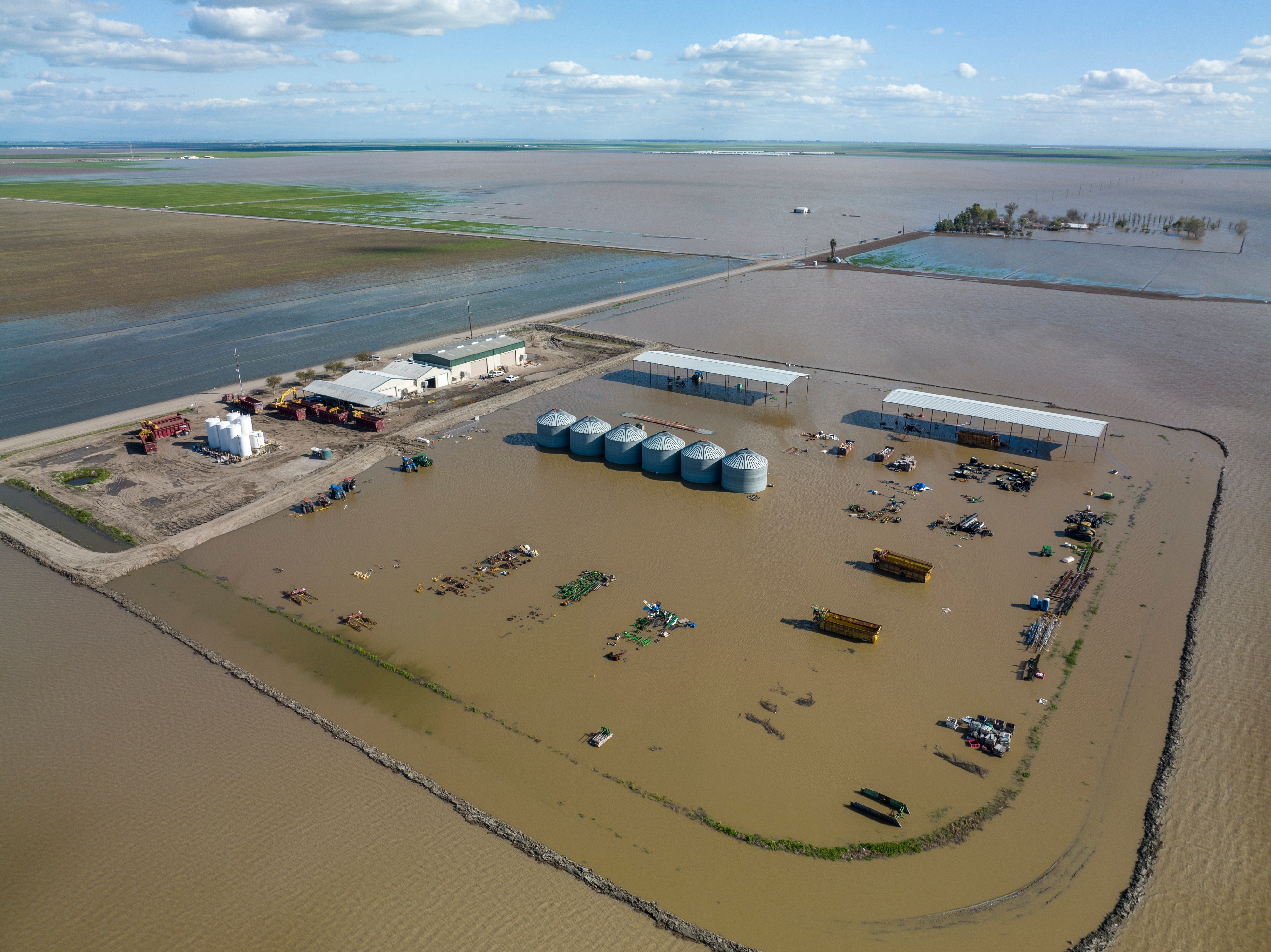Farmers need 'direct relief' for storms, lawmakers told

Photo/California Department of Water Resources

By Caleb Hampton
After atmospheric river storms slammed California in January and March, damaging crops and delivering record amounts of rain and a historic snowpack, farmers and farm advocates continue to tally the losses, and they demand better planning for future storms.
The California Farm Bureau has called on state legislators to improve mechanisms for disbursing disaster relief payments to farmers and farm communities after flooding.
Testifying May 23 before a joint informational hearing of the California Assembly Agriculture Committee and the Assembly Emergency Management Committee, California Farm Bureau Administrator Jim Houston said the storm impacts have been especially hard on small farmers, including many that may lack insurance.
“There is no good mechanism for people to recover their losses. It’s bits and pieces,” Houston said at the hearing. “We need to be willing to give farmers direct relief.”
California agricultural regions have suffered losses from at least a dozen atmospheric storms that dumped heavy rainfall across the state this winter, according to a state report prepared for the hearing. Flooding, landslides, downed trees and other damage caused widespread crop losses for farmers, who continue to clean up debris and adjust their crop planning.
In Monterey County alone, the storms caused more than $600 million in agricultural losses, according to a report by the Monterey County Agricultural Commissioner’s office. The flood damage included $160 million in losses to strawberry growers and $54 million in losses to lettuce growers.
Estimated agricultural losses in neighboring Kings and Tulare counties, which have been severely affected by flooding, levee breaks and the refilling of the dormant Tulare Lake, have topped $460 million, according to local officials.
Houston began his testimony by asking lawmakers to put themselves in the shoes of farmers as levees broke and waters rose. “You’re going to hear lots of figures,” he said, referring to the economic toll of the storms. “But what’s it like for a person on the ground when this happens?”
He shared the story of María Inés Catalán, a small farmer in San Benito County who lost everything in the storms. “When this happens, it’s devastating. It’s life-crushing,” said Houston, who also cited the trials of dairy farmers who scrambled to evacuate cattle to higher ground.
“I wish they wouldn’t have to go through it, but if they are going to go through it, you find ways to help them and make them whole,” he said.
Assembly Member Robert Rivas, D-Salinas, who chairs the Assembly Agriculture Committee and represents Monterey County farmers impacted by the storms, emphasized the importance of protecting California farms. “The economic losses are staggering, but also the community impacts,” Rivas said. “Certainly, we have work to do.”
Last week, state officials announced a Storm Assistance for Immigrants Project will provide $95 million to undocumented immigrants who were impacted by the storms earlier this year, including farmworkers in the Central Coast and elsewhere.
The flood aid, which will be disbursed on pre-loaded debit cards or checks of up to $1,500 per person, comes after months of pressure from flood victims and advocates and following promises by Gov. Gavin Newsom of a rapid response. The maximum amount of aid is $4,500 per household.
In addition to economic aid, farm groups have pushed the state government to ramp up work on water infrastructure projects.
Last month, Newsom signed an executive order aimed at streamlining bureaucratic processes that have slowed public works projects. The policy is designed to speed processes around permitting and environmental reviews and expedite court reviews to avoid construction delays on water projects and other infrastructure.
The executive order also aims to maximize use of federal dollars set aside for climate projects and use that money for important infrastructure projects.
Members of the Central Valley Flood Protection Board amplified the intent of the governor’s actions during a May 26 board meeting. “The imperative is clear,” said Keely Bosler, director of the California Department of Finance and member of the flood protection board. “We need to keep moving forward on the projects to protect people and property.”
During that meeting, the board’s policy advisor, Darren Suen, highlighted other legislative actions related to California water projects, including portions of the May budget revision related to flood relief and prevention.
In the May budget revision, the governor moved $125 million in funding from drought contingency to flood contingency, which can be used to support costs associated with flood preparedness, response and recovery.
“There was a feeling that with all the recent rains, the need for (drought contingency funds) might not be as great, so this was shifted over to a flood contingency pot,” Suen said.
The budget also includes $290 million to support communities at risk of flooding, $75 million for local flood control projects such as the Pajaro River Flood Risk Management Project, an increase of $25 million in Small Agriculture Business Relief Grants, $25 million to fund disaster response emergency operations associated with storms and flooding, and $40 million to fund San Joaquin floodplain restoration.
(Caleb Hampton is an assistant editor of Ag Alert. He may be contacted at champton@cfbf.com.)




